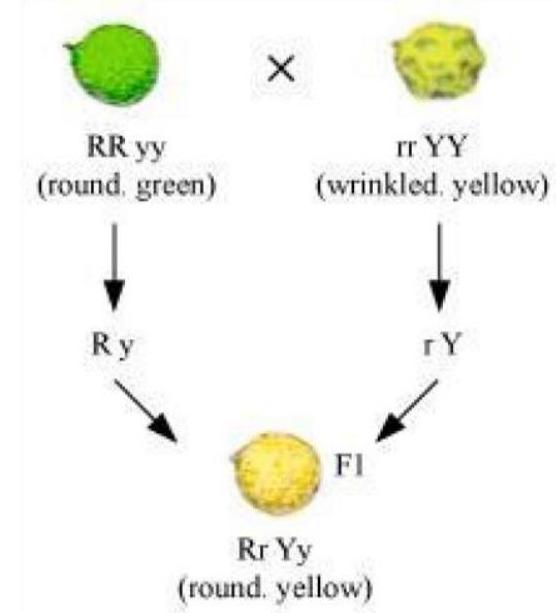Chapter 08 Heredity Questions-02
QUESTIONS
1. How do Mendel’s experiments show that traits may be dominant or recessive?
Show Answer
Answer
Mendel selected true breeding tall (TT) and dwarf (tt) pea plants. Then, he crossed these two plants. The seeds formed after fertilization were grown and these plants that were formed represent the first filial or $\mathrm{F_1}$ generation. All the $\mathrm{F_1}$ plants obtained were tall.

2. How do Mendel’s experiments show that traits are inherited independently?
Show Answer
Answer
Mendel crossed pea plants having round green seeds (RRyy) with pea plants having wrinkled yellow seeds (rrYY).

3. A man with blood group A marries a woman with blood group $O$ and their daughter has blood group $O$. Is this information enough to tell you which of the traits - blood group A or O - is dominant? Why or why not?
Show Answer
Answer
No. This information is not sufficient to determine which of the traits - blood group A or $O$ - is dominant. This is because we do not know about the blood group of all the progeny.
Blood group A can be genotypically AA or AO. Hence, the information is incomplete to draw any such conclusion.
4. How is the sex of the child determined in human beings?
Show Answer
Answer
In human beings, the females have two $X$ chromosomes and the males have one $X$ and one $Y$ chromosome. Therefore, the females are $XX$ and the males are $XY$.
The gametes, as we know, receive half of the chromosomes. The male gametes have 22 autosomes and either X or Y sex chromosome.
Type of male gametes: 22+X OR 22+ Y.
However, since the females have XX sex chromosomes, their gametes can only have $X$ sex chromosome.
Type of female gamete: 22+ X

Sex determination in humans
Thus, the mother provides only $X$ chromosomes. The sex of the baby is determined by the type of male gamete ( $X$ or $Y$ ) that fuses with the $X$ chromosome of the female.










